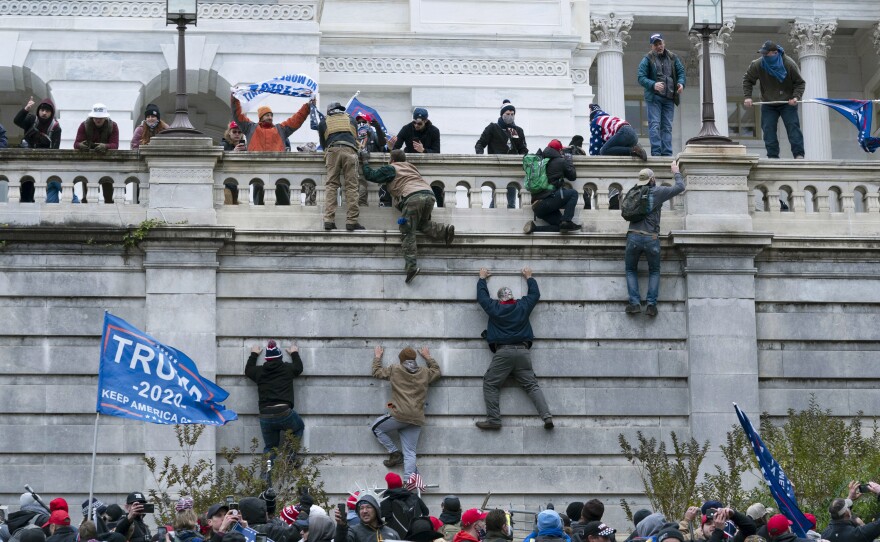A growing number of those who participated in the siege of the Capitol were military veterans. While veterans' groups are aware of extremism in their ranks, there are few resources to tackle the issue head-on.
Ashli Babbitt was an Air Force veteran from San Diego. She was killed by police as she tried to push deeper into the Capitol on Jan. 6. Her social media is a mix of QAnon conspiracies and posts falsely claiming that the election was stolen. In one video, the avidly pro-Trump Babbitt segued from immigration to California politicians as she drove a car, becoming increasingly agitated.
“I am so sick of these politicians in this ... damn state,” Babbitt yelled. “They’re all worried about what Trump is doing. How about we worry about what the hell you're doing.”
The VA and major veterans groups have condemned the insurrection at the U.S. Capitol. But some groups worry that vets are being unfairly singled out.
“The radicalization among certain fringe elements,” said John Raughter, spokesman for the American Legion. “We don’t see it as more a problem among veterans as for America in general.”
The American Legion has a program to confront suicide among veterans. They even have legion posts inside prisons to help rehabilitate veterans. They don’t have similar programs to confront extremism directly, even though days before the insurrection, The San Diego Union-Tribune uncovered a local Legion post commander who boasted about being a member of the far-right group the Proud Boys.
Veterans are only part of a nationwide crisis, said Pete Simi, associate professor of Sociology at Chapman University, who specializes in violent extremism. He says veteran’s groups are just one small part of a broader nationwide crisis.
“We’re way behind the eight-ball. We haven’t taken this seriously,” he said. “We just have not dealt with this problem in a meaningful way. We don’t have a national strategy and state and local resources aren’t there.”
The number of hate groups spiked during the Obama years, he said.
“There was a major resurgence after Obama’s election in '08, and there were a lot of factors, not unlike today, that were helping to propel that,” he said. “And we did nothing, in fact, we denied it was a problem.”
Much of the research into deradicalizing people who have taken up violent extremism centers around Islamic extremists, Simi said.
“And when you’re talking about specific intervention programs, designed specifically for veterans, it’s not there,” he said.
According to NPR, among the roughly 160 people facing charges after the siege of the Capitol, roughly 1 in 5 were current or former military members.
Vets have long been a target of extremist groups, said Tony McAleer, author of "The Cure For Hate."
“I can see how people can get manipulated by their patriotism. And duped into doing things that when they take a step back they think, I can’t believe I did that,” he said.
McAleer, a former neo-Nazi and a Canadian veteran, counsels people trying to leave extremist groups. He said some veterans of the recent wars come back desensitized to other cultures after being put into situations where they cannot always tell friend from foe.
“You have to dehumanize other human beings,” McAleer said. "To prepare people for violence you have to dehumanize the target first.”
Nearly a decade ago, McAleer also helped found Life After Hate, which now has a federal grant to help those trying to leave violent extremist groups. Spokesman Dimitrios Kalantzis said the difference between now and a decade ago, is that people are speaking more openly about the threat of domestic radical extremism.
“People will hopefully, more people will get the help they need before they become radicalized to violence,” he said. “Before they take that last and final step.”
In the wake of the siege of the Capitol, and as awareness grows, there is hope that veterans groups will more actively involve themselves in deradicalization programs. After all, these are the groups that vets often turn to first for help.






